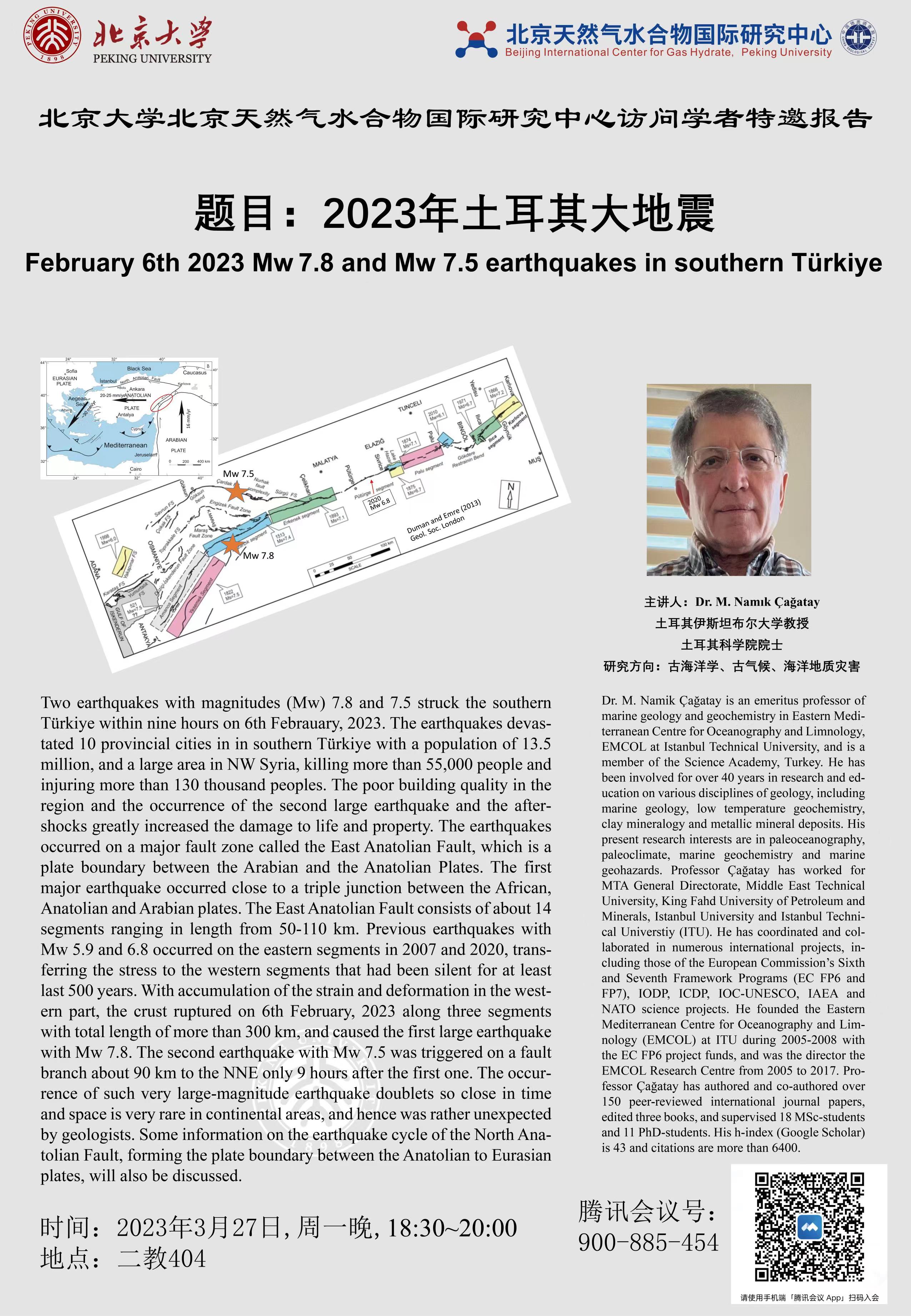Speaker: Dr. M. Namik Cagatay
Time: 18:30-20:00 pm, March 27, 2023, GMT+8
Venue: Tecent Meeting ID: 900-885-454
Abstract:
Two earthquakes with magnitudes (Mw) 7.8 and 7.5 struck the southerrTiirkive within nine hours on 6th Febrauary, 2023.The earthquakes devastated 10 provincial cities in in southern Turkiye with a population of 13.5 million, and a large are in NW Syria, killing more than 55,000 people and injuring more than 130 thousand peoples. The poor building quality in the region and the occurrence of the second large earthquake and the aftershocks greatly increased the damage to life and property. The earthquakes occurred on a major fault zone called the East Anatolian Fault, which is a plate boundary between the Arabian and the Anatolian Plates. The first major earthquake occurred close to a triple junction between the African, Anatolian and Arabian plates. The East Anatolian Fault consists of about 14 segments ranging in length from 50-110 km. Previous earthquakes from Mw 5.9 and 6.8 occurred on the eastern segments in 2007 and 2020, transerring the stress to the western segments that had been silent for at least 500 years. With accumulation of the strain and deformation in the western part, the crust ruptured on 6th February, 2023 along three segments with total length of more than 300 km, and caused the first large earthquakewith Mw 7.8. The second earthauake with Mw 7.5 triggered on a faulf branch about 90 km to the NNE only 9 hours after the first one. The occurrence of such very large-magnitude earthquake doublets so close in time and space is very rare in continental areas, and hence was rather unexpectecby geologists. Some information on the earthquake cycle of the North Anatolian Fault, forming the plate boundary between the Anatolian to Eurasianplates, will also be discussed.
Biography:
Dr. M. Namik Cagatay is an emeritus professor of omarine geology and geochemistry in Eastern Mediterranean Centre for Oceanography and Limnology, EMCOL at Istanbul Technical University, and is amember of the Science Academy, Turkey. He habeen involved for over 40 years in research and education on various disciplines of geology, including marine geology, low temperature geochemistryclay, clay mineralogy and metallic mineral deposits. His present research interests are in palegraphypaleoclimate, marine geochemistry and marine geohazards. Professor Cagatay has worked for MTA General Directorate, Middle East Technical University, King Fahd University of Petroleum and Minerals, Istanbul University and Istanbul Technical Universtiy (ITU). He has coordinated and collaborated in numerous international proiects, including those of the European Commission's Sixtland Seventh Framework Programs (EC FP6 ancFP7)、IODP.ICDPIOC-UNESCO.IAEA anNATO science projects. He founded the EasterrMediterranean Centre for Oceanography and Limnology (EMCOL) at ITU during 2005-2008 with the EC FP6 proiect funds, and was the director theEMCOL Research Centre from 2005 to 2017. Professor Cagatay has authored and co-authored ove150 peer-reviewed international journal papersedited three books, and supervised 18 MSc-studentsand 11 PhD-students. His h-index (Google Scholar)is 43 and citations are more than 6400.
Source: Beijing International Center for Gas Hydrate
